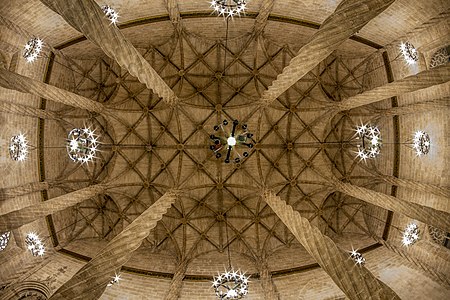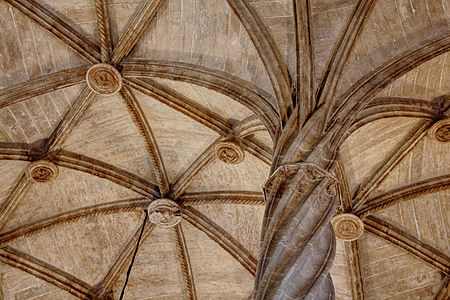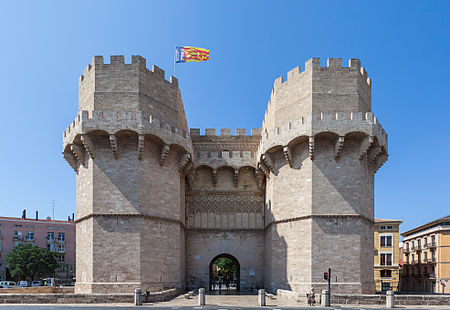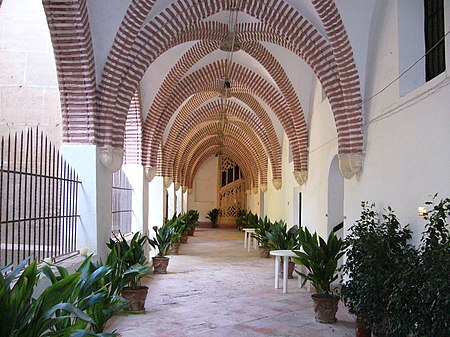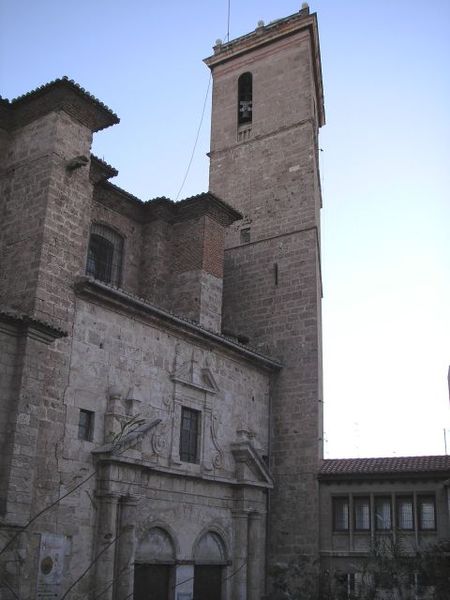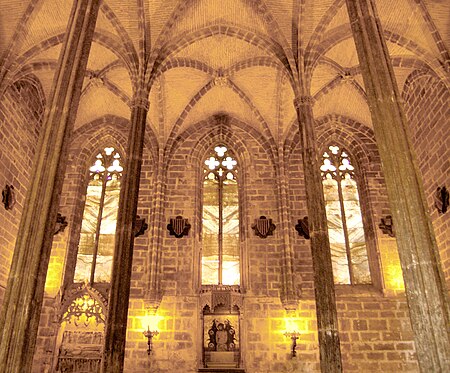
Castellón de la Plana, Castelló de la Plana (official), or simply Castellón or Castelló, is the capital city of the province of Castellón, in the Valencian Community (Spain). It is located in the east of the Iberian Peninsula, on the Costa del Azahar by the Mediterranean Sea. The mountain range known as Desert de les Palmes rises inland north of the town.
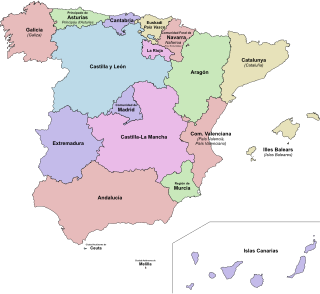
Jérica is a town in the Castellón province of Valencian Community, Spain. It is in the comarca (region) of Alto Palancia. Its population was 1,703 at the end of 2009.
The Divisiones Regionales de Fútbol in the Valencian Community, are organized by Valencian Football Federation:

Castelló de Rugat is a municipality in the comarca of Vall d'Albaida in the Valencian Community, Spain.

Spanish Gothic architecture is the style of architecture prevalent in Spain in the Late Medieval period.

The Corts Valencianes, commonly known as Les Corts, are the main legislative body of the Generalitat Valenciana and therefore of the Valencian Community. The main location of the Corts is in the Palace of the Borgias in Valencia; however it can meet at any location in the Valencian lands. The Corts has its origins in bodies established in the thirteenth century by King James I of Aragon. The modern institution was established in 1982 under the Valencian statute of autonomy of 1982. The current Corts were elected in 2015.

The Valencian Community is an autonomous community of Spain. It is the fourth most populous autonomous community after Andalusia, Catalonia and Madrid with more than five million inhabitants. Its homonymous capital Valencia is the third largest city and metropolitan area in Spain. It is located along the Mediterranean coast on the east side of the Iberian peninsula. It borders with Catalonia to the north, Aragon and Castilla–La Mancha to the west, and Murcia to the south. The Valencian Community consists of three provinces which are Castellón, Valencia and Alicante.

Alcoy or Alcoi is an industrial and university city, region and municipality located in the province of Alicante, Spain. The Serpis river crosses the municipal boundary of Alcoi. The local authority reported a population of 61,135 residents in 2018.

The Monastery of Sant Jeroni de Cotalba is a monastic building of Valencian Gothic, Mudéjar, Renaissance, Baroque and Neoclassical styles constructed between the 14th and 18th centuries, located in the municipal area of Alfauir, (Valencia), Spain, about 8 km. from the well-known city of Gandia.
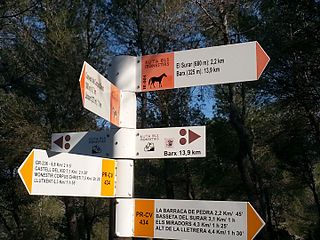
The Route of the Monasteries of Valencia (GR-236) is a religious and cultural route that connects five monasteries located in central region of the Province of Valencia,, in Spain. The Route was inaugurated in the year 2008.
Valencians are the native people of the Valencian Community, in eastern Spain. Legally, Valencians are the inhabitants of the community. Since 2006, the Valencian people is officially recognised in the Valencian Statute of Autonomy as a "historical nation" "within the unity of the Spanish nation". The official languages of Valencia are Valencian and Spanish.
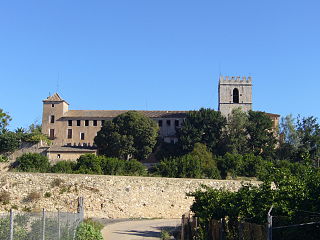
The route PR-CV 100 is a short-distance footpath of the Valencian Community (Spain) that goes from Ròtova (Valencia) to the Monastery of Sant Jeroni de Cotalba, in Alfauir (Valencia), crossing different natural places and monuments, saws, rivers, etc., all of them of great landscape and cultural interest.

The Route of the Borgias is a cultural route, that includes sites associated with the Borja or Borgia, located in their native Valencian Community, Spain. The marketing of the route was inaugurated in 2007.

The Monastery of Santa Maria de la Murta is a former monastery of the order of the Hieronymites located in the Valley of La Murta in Alzira (Valencia), Spain.

Ricardo J. Vicent Museros was a Spanish printer and publisher. After studying in Germany he returned to Valencia with new methods of work, advertising and graphic marketing. He founded the "Museo Nacional de la Imprenta y la Obra Gráfica" in El Puig de Santa María. He promoted the twinning of the cities of Valencia and Mainz (Germany). In 1992, the International Gutenberg Society granted him the "Gutenberg Prize" and in 2003 he received the "Cross of Civil Merit" from the German government for his work in favour of cultural relations between Spain and Germany.

The Route of the Valencian classics,, is a cultural route through the lands of the great classical writers of the Valencian literature of the Valencian Golden Age: Ausiàs March, Joanot Martorell and Joan Roís de Corella, the three related to the court of the Duke Alfonso of Aragon and Foix, "the Old".
This is the results breakdown of the local elections held in the Valencian Community on 24 May 2015. The following tables show detailed results in the autonomous community's most populous municipalities, sorted alphabetically.
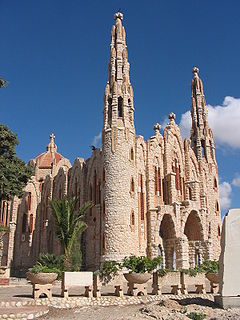
Valencian Art Nouveau, is the historiographic denomination given to an art and literature movement associated with the Art Nouveau in the Valencian Community, in Spain.

The Ojos Negros Greenway, is a 160-kilometre greenway in Spain running between the village of Santa Eulalia del Campo in the province of Teruel in Aragón and the village of Algimia d'Alfara, in the province of Valencia in the Valencian Community.
